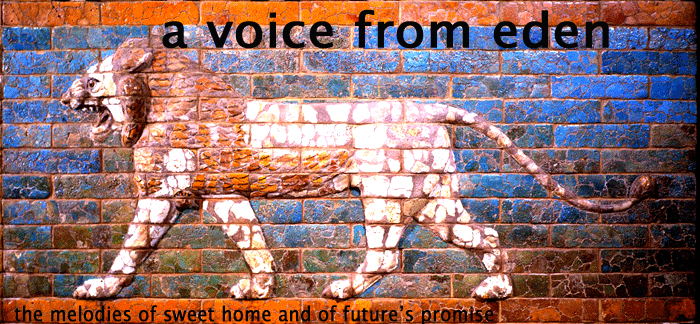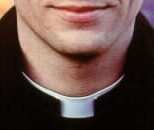Selecting a new pope: the preparations for the conclave (part 5)
[This continues the series "What happens when a pope dies." The following installments deal with the process of electing a new pope. I have used as references Pope John Paul II's Apostolic Constitution "Universi Dominici gregis" promulgated in 1996 as well as James-Charles Noonan, Jr.'s "The Church Visible: The Ceremonial Life and Protocol of the Roman Catholic Church"]
With the approaching conclave, the Apostolic Palace is prepared for the cardinals who will occupy the "cells" or living spaces created for them. In 1978, these cells included an iron hospital bed, one chair, a prie-dieu and crucifix, a stand and washbasin, and a wastebasket. The walls of these cells were made of canvas and were suspended from metal frames because so many of them occupied sumptuous apartments in the Palace and needed to be freestanding. For this upcoming conclave to elect the successor of John Paul, the cardinals will be lodged in more comfortable quarters and will be relatively freer.
Also, the Sistine Chapel where the actual voting will take place will be prepared for the conclave. The floor is usually raised by putting a temporary wooden floor over the marble and then a carpet for warmth as many of these cardinals as you know are rather elderly, so spending a lot of time on the marble mosaic floor would be a hardship.
Until 1978, each cardinal-elector was provided a "throne" with a baldaccino or canopy in the Sistine Chapel during the conclave, symbolizing his power and jurisdiction: as stated earlier, power falls on the College of Cardinals as a group, but specifically on the cardinal chamberlain. The jurisdiction of these cardinals is in matters of ordinary business so critical that they could not be postponed for the new pope to address. In Pope Paul VI's motu propio "On the Vacancy of the Apostolic See," these powers are further limited to encompass only matters of Church governance and not to those issues affecting the Catholic faithful or the Church's relations with other countries.
Anyway, going back to the canopy and the thrones, Pope Paul VI abolished these because of lack of space. What is to be used in lieu of these are simple leather desk chairs. What the cardinals used to do with these baldaccini is that as soon as a new pope is named, the cardinals pulled a cord that folded their canopies. Only the new pope's canopy therefore remained raised, signifying his new juridical power. This little custom, which I have seen once portrayed in a film called Shoes of the Fisherman with Anthony Quinn, is quite dramatic.
Before election can begin, the entire conclave must be searched for any breach of security: cell phones, bugs, cameras, explosives, anything. Pope Paul VI in his reform of the conclave asked that the papal master of ceremonies have with him other officials who will be present at the conclave: an architect who knows very well the floor plan of the area for the conclave and two other technicians trained in electronic instrumentation.
After the business of the pre-conclave and the novendiales are finished, the General and the Particular Congregations, which have been meeting throughout, then prepare for the Mass of the Holy Spirit, which traditionally opens each conclave. (Check here for a reference to the Congregations.) The Holy Spirit will be the active agent in the selection of the next pope--not politics, not the Church's "need" for this kind of man or that to lead the Church, or any other factors. Sure, these things may factor in the thinking of the cardinals. But it is always the Spirit's promptings within them to which the cardinals pay close heed especially when momentous decisions have to be made. It is through the Spirit's guidance of the cardinals that a new pope is chosen. So, it is only fitting to invoke the Spirit at Mass in preparation for the conclave.
The day before the start of the conclave the cardinals take an oath--a second of three oaths. The first one being the oath they took upon taking their posts as members of either the Particular or General Congregations. This second oath binds them to secrecy with regards to the election of the new pontiff. Also the cardinals swear not to give help and support to any interference or intervention from any civil power or any group that might want to influence the election.
The cardinals announced this week that the conclave will begin on Monday, April 18th, 16 days after the death of John Paul.
[Stay tuned for part 6: Entering the conclave]
With the approaching conclave, the Apostolic Palace is prepared for the cardinals who will occupy the "cells" or living spaces created for them. In 1978, these cells included an iron hospital bed, one chair, a prie-dieu and crucifix, a stand and washbasin, and a wastebasket. The walls of these cells were made of canvas and were suspended from metal frames because so many of them occupied sumptuous apartments in the Palace and needed to be freestanding. For this upcoming conclave to elect the successor of John Paul, the cardinals will be lodged in more comfortable quarters and will be relatively freer.
Also, the Sistine Chapel where the actual voting will take place will be prepared for the conclave. The floor is usually raised by putting a temporary wooden floor over the marble and then a carpet for warmth as many of these cardinals as you know are rather elderly, so spending a lot of time on the marble mosaic floor would be a hardship.
Until 1978, each cardinal-elector was provided a "throne" with a baldaccino or canopy in the Sistine Chapel during the conclave, symbolizing his power and jurisdiction: as stated earlier, power falls on the College of Cardinals as a group, but specifically on the cardinal chamberlain. The jurisdiction of these cardinals is in matters of ordinary business so critical that they could not be postponed for the new pope to address. In Pope Paul VI's motu propio "On the Vacancy of the Apostolic See," these powers are further limited to encompass only matters of Church governance and not to those issues affecting the Catholic faithful or the Church's relations with other countries.
Anyway, going back to the canopy and the thrones, Pope Paul VI abolished these because of lack of space. What is to be used in lieu of these are simple leather desk chairs. What the cardinals used to do with these baldaccini is that as soon as a new pope is named, the cardinals pulled a cord that folded their canopies. Only the new pope's canopy therefore remained raised, signifying his new juridical power. This little custom, which I have seen once portrayed in a film called Shoes of the Fisherman with Anthony Quinn, is quite dramatic.
Before election can begin, the entire conclave must be searched for any breach of security: cell phones, bugs, cameras, explosives, anything. Pope Paul VI in his reform of the conclave asked that the papal master of ceremonies have with him other officials who will be present at the conclave: an architect who knows very well the floor plan of the area for the conclave and two other technicians trained in electronic instrumentation.
After the business of the pre-conclave and the novendiales are finished, the General and the Particular Congregations, which have been meeting throughout, then prepare for the Mass of the Holy Spirit, which traditionally opens each conclave. (Check here for a reference to the Congregations.) The Holy Spirit will be the active agent in the selection of the next pope--not politics, not the Church's "need" for this kind of man or that to lead the Church, or any other factors. Sure, these things may factor in the thinking of the cardinals. But it is always the Spirit's promptings within them to which the cardinals pay close heed especially when momentous decisions have to be made. It is through the Spirit's guidance of the cardinals that a new pope is chosen. So, it is only fitting to invoke the Spirit at Mass in preparation for the conclave.
The day before the start of the conclave the cardinals take an oath--a second of three oaths. The first one being the oath they took upon taking their posts as members of either the Particular or General Congregations. This second oath binds them to secrecy with regards to the election of the new pontiff. Also the cardinals swear not to give help and support to any interference or intervention from any civil power or any group that might want to influence the election.
The cardinals announced this week that the conclave will begin on Monday, April 18th, 16 days after the death of John Paul.
[Stay tuned for part 6: Entering the conclave]




<< Home